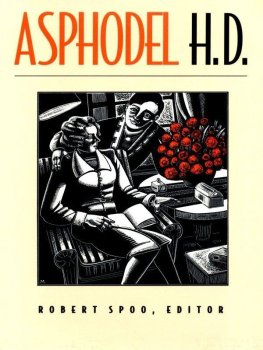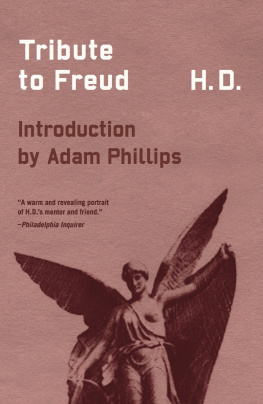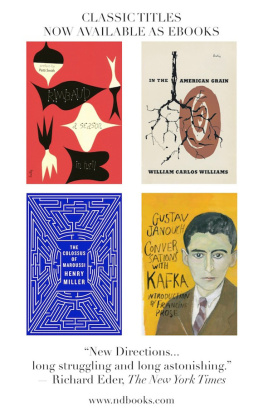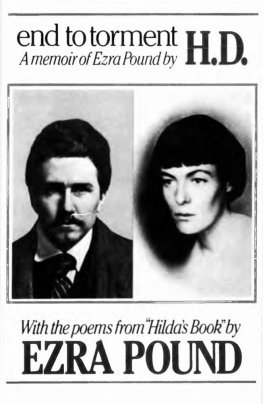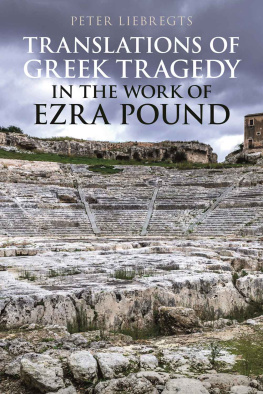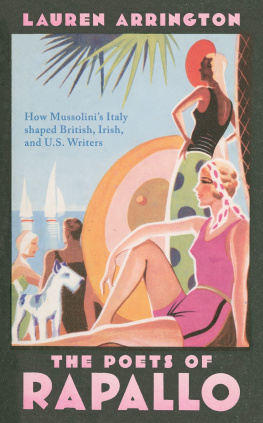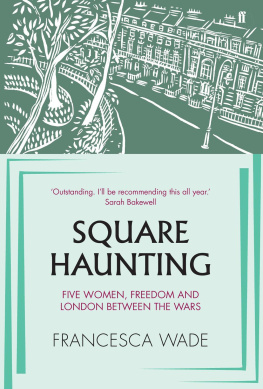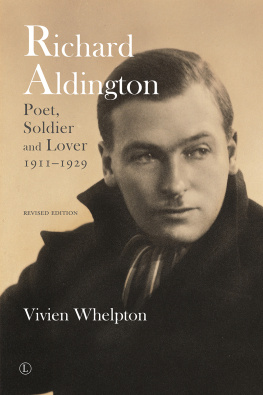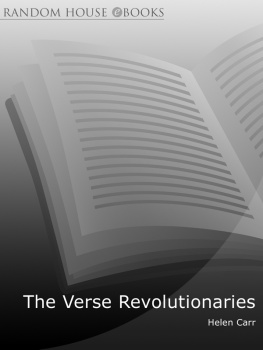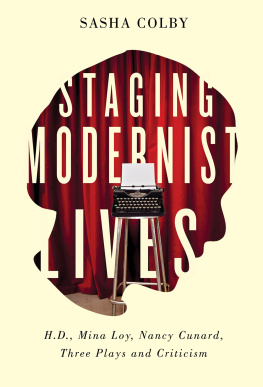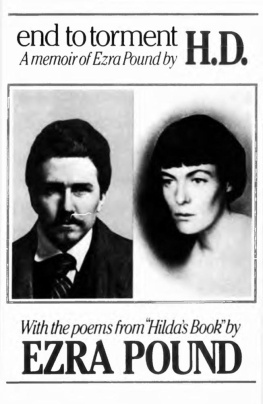H.D. (Hilda Doolittle)
Asphodel
I wish to thank Perdita Schaffner and the New Directions Publishing Corporation for permission to publish Asphodel. I also wish to thank Mrs. Schaffner and the Yale Collection of American Literature, Beinecke Rare Book and Manuscript Library, Yale University, as well as the Rosenbach Museum and Library in Philadelphia, for permission to quote from unpublished H.D. material in the Introduction and Appendix.
Any serious editing project is a collaborative effort, and I have benefited from the advice of many persons within and outside the community of H.D. scholars. From the start, the wisdom and support of Susan Stanford Friedman and Louis H. Silverstein have been invaluable; they read drafts of the introductory material and made suggestions about problematic details in H.D.s text. I am also grateful for the kind encouragement of Perdita Schaffner.
I would like to thank D. Thomas Benediktson and Eileen Gregory for information about H.D.s classical allusions; Corinna del Greco Lobner, Jane Nicholson, and Vibeke Petersen for advice about H.D.s use of foreign languages; and Louis H. Silverstein, Charles Timbrell, and Caroline Zilboorg for biographical information about H.D. and her friends. Thanks also to Joanne Cornell, Michael Davis, Lars Engle, Norman Grabo, Monty Montee, Mary OToole, and Omar Pound for reading portions of this text and providing helpful criticisms. It was Gary Burnett who first made me aware of Asphodel; our early conversations about H.D. were an inspiration and a spur.
Thanks also to Diana Collecott, Joseph A. Kestner, David Kramer, A. Walton Litz, John Logan, Claus Melchior, Adalaide Morris, Lawrence Rainey, Caroline Rittenhouse, Kathy A. Sears, and Patricia Willis. I would also like to acknowledge the valuable assistance of Steve Jones and the staff at the Beinecke Rare Book and Manuscript Library, Yale University; Sidney F. Huttner and the staff at Special Collections, McFarlin Library, University of Tulsa; and Leslie A. Morris and the staff at the Rosenbach Museum and Library in Philadelphia.
I also want to express my gratitude to Duke University Press and its editors for their excellent work. This edition would not have been possible without the advice and sensitive collaboration of Joanne Ferguson, who supported this project from its inception.
Special thanks to the owners and proprietors of Silverleigh for their friendship, hospitality, and conversation, and to Monty Montee for his patience and refreshingly ironic smile.
A National Endowment for the Humanities Summer Stipend in 1989 provided a crucial early impetus and allowed me to travel to archives.
H.D.s Asphodel is a work with a strangely disembodied reputation, a sort of phantom novel that makes frequent appearances in the criticism on H.D. yet, until now, has had no public, practical existence. Although it has occasioned important exegesis,1Asphodel itself has remained unpublished since its completion in the 1920s, a modernist text akin in its experimental form and spirit to Woolfs Jacobs Room, Steins The Making of Americans, and Richardsons Pilgrimage. Its absence from the canon has created a significant historical and aesthetic lacuna, impeding a full appreciation of H.D.s life and work. Although most serious students of H.D. can outline the plot of Asphodel, only those who have read the manuscript at Yale University know more of the actual text than the fragments reproduced in the criticism. It might have intrigued H.D. to learn that this novel of lesbian and heterosexual love would one day have a status curiously similar to that of the poems of her beloved Sappho.
Along with Paint It To-Day (written in 1921), Asphodel represents one of the earliest surviving examples of the sustained experiments in autobiographical fiction that H.D. began in an effort to free herself from an old tangle2 of troubled thinking about the events of her past in particular those of World War I and to move beyond the H.D. Imagiste role which seemed to tighten about her after the publication of her first volume of poetry, Sea Garden, in 1916. Asphodel is in many ways the aesthetic antithesis of the crystalline imagist poem: quirky and nebulous rather than tightly focused and exquisitely controlled; repetitious and recursive instead of immediate in its effect; intensely personal and psychological rather than objective in its dramatization of the perceiving mind. Like H.D.s later prose writings but perhaps even more broodingly and insistentlyAsphodel repeats charged images and ides fixes, altering them incrementally as the narrative proceeds, pushing them painfully and reluctantly toward what Susan Stanford Friedman has referred to as the analytic clearing of understanding and control,3 or what the novel calls, more skeptically perhaps, those fields of asphodel not met with on this side of the grave. Gertrude Stein described a related process in The Making of Americans: Always repeating is all of living, everything that is being is always repeating, more and more listening to repeating gives to me completed understanding.4
First composed in 19211922 and probably revised a few years later, Asphodel is, from one perspective, an early version of the quite different autobiographical novel H.D. completed decades later under the title of Madrigal (published in 1960 as Bid Me to Live [A Madrigal]). H.D. considered Madrigal the final, most satisfying version of her story of War I, a story she had been evolving for decades: I had been writing or trying to write this story, since 1921. I wrote in various styles, simply or elaborately, stream-of-consciousness or straight narrative. I re-wrote this story under various titles, in London and in Switzerland.5 In 1959 she told her friend and literary agent Norman Holmes Pearson that [Madrigal] Phoenix-ed out of Asphodel that was put far away & deliberately forgotten 6 Her retrospective characterization of Asphodel as an early version or edition of Madrigal, together with her belief that it lacked the latters daemonic drive or. . daemon (one of H.D.s words for genius),7 made her reluctant to preserve copies of Asphodel. In 1949 she asked her companion Bryher (Annie Winifred Ellerman) somewhat tentatively to destroy the copy of the manuscript in her possession;8 a decade later she wrote Pearson: If carbons [of Her and Asphodel] ever turn up, please destroy them.9
Fortunately, for us and for H.D., one copy survived, despite the fact that its title page also bears the instruction DESTROY scrawled in H.D.s hand. It is true that part of Asphodel overlaps with the period covered by Madrigalthe later years of World War I and both novels contain characters based on H.D.s husband Richard Aldington and her lover Cecil Gray. But much of Madrigal focuses on the D. H. Lawrence figure, Rico, who never appears in the earlier novel; and Asphodel, which traces H.D.s life from her departure for Europe in 1911 to the birth of her daughter in 1919, has a temporal scope and a range of characters Madrigal never attempts. Like Lawrences Sons and Lovers and Bryhers novel-sequence Development (1920) and Two Selves (1923), Asphodel is an autobiographical bildungsroman, a work whose fidelity to the actual events of H.D.s life, while it should never be taken entirely for granted, is on the whole remarkable. She explained in 1925 that the things I write are all indirectly (when not directly) inspired by my experiences.10 (See the Appendix for capsule biographies of the persons behind the fictions of

